
Deciding what to write about on your website can be tricky. That’s true for both beginners and seasoned marketers alike.
Success in content marketing requires consistent output over the long term. And that means an ongoing need for new and interesting content ideas.
Whether you’re a startup small business or a large enterprise, here’s 16 ideas for new content you can use for your website.
Effortlessly export your Google Docs to WordPress with just 1-click.
Get Started Today
Posting educational content is a great way to:
These articles will be informational and/or instructional. Sometimes it’ll be tricky to mention your product or service, but other times there’ll be a clear opportunity. Here’s some types of educational software development services content.
‘How to’ articles
If a person is searching how to do something, then usually the content they’re looking for is a step-by-step explanation. That means they have a challenge, and it may present you an opportunity to tactfully pitch your solution.
Here’s an example from Toggl Plan. It satisfies the searcher’s need by explaining how to create a gantt chart in Excel, but then says ‘hey, you can use Toggl Plan for that instead!’.

These people are likely going to be even further up their decision making funnel.
There’s a big gap between someone wanting to find out ‘what is a chatbot’, for example, through to them buying a chatbot. Lots more learning, consideration, evaluation. Chances are a lot of those people reading a beginner’s guide will never buy a chatbot.
That being said, there’s still value in creating this content. As well as proving your expertise, it is also an opportunity to push people further along the funnel. That could be gathering a micro-conversion (e.g. signing up for an email list), or simply signposting them to the next resource. Moreover, these “What is” articles can serve as a foundation to build content models that enhance your content strategy and user experience. By providing clear explanations of key concepts, you’re laying the groundwork for more in-depth content down the line.
Here’s an example from Skale. Their ‘what is saas marketing’ post explains exactly that, then provides useful links to further reading on several saas marketing topics.

A glossary is another type of informational content that you can produce for your website. It can allow your site to rank in Google for a ton of broad definition keywords, and attract a lot of traffic.
This kind of content also attracts backlinks from people who need an authoritative resource to cite.
Here’s an example from Shopify. Their ‘business encyclopedia’ gets over 100k per month in organic traffic (according to Ahrefs), and has helped them to rank for hyper competitive terms such as ‘ecommerce’.


At the other end of the spectrum, we have ‘high intent’ content. These are typically people who’re in buying mode, or not far from it. People that are already aware of a need or problem that they have, and are seeking a solution.
Let’s look at some examples.
This can come in several forms. Best products, best tools, best brands, and so on. In each case though, the person knows what they want to achieve, and they’re simply evaluating their options.
Here’s an example from an affiliate site that publishes information about knives. In this case, they’re recommending the ‘best Japanese knives’. It’s worth nothing that this isn’t simply a random list of 15 good Japanese knives.
Instead, the article recommends different types of knives, at different price points. It also includes filters so the reader can quick identify what they’re looking for (for example, a premium Gyuto knife).
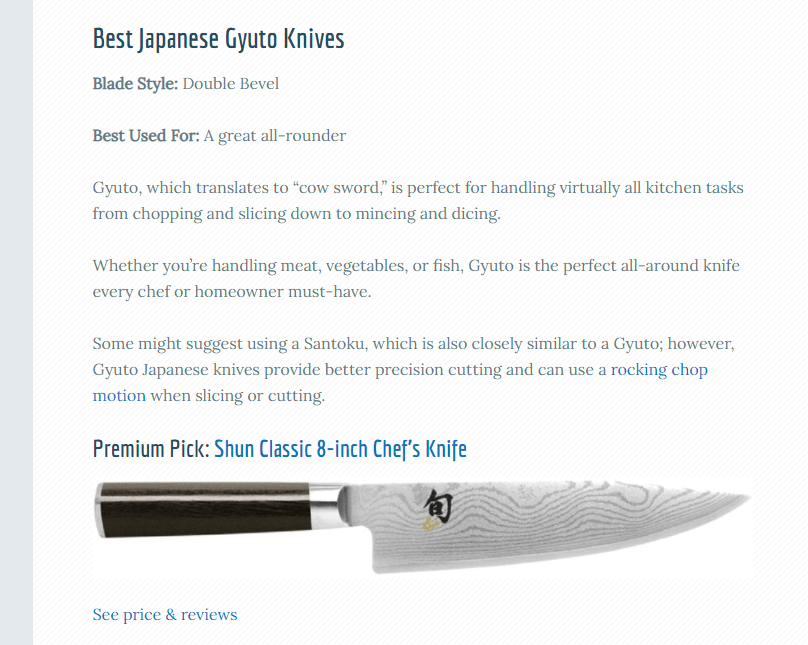
Following on from the listicle idea, lots of people are searching for alternatives to popular products or brands.
That indicates they’re aware of at least one solution to their challenge, which is often the market leader. For whatever reason, it’s not quite the perfect fit, or maybe the person just wants to see what else is out there.
Either way, it’s a great opportunity to leverage a competitor’s brand awareness, and get in front of your target market at the right time.
Here’s an example from GetResponse. They’ve identified the shortcomings of ClickFunnels, and pitched themselves as the first choice alternative.
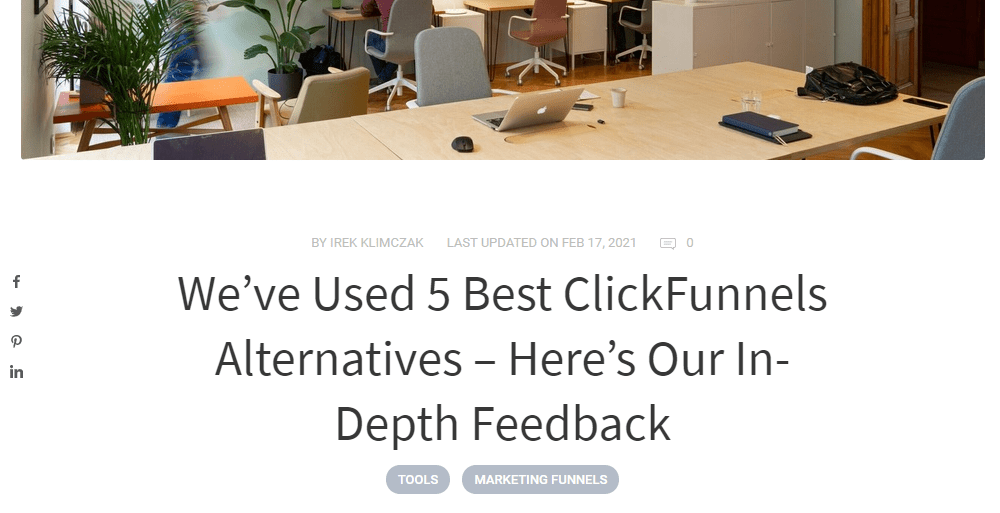
Comparing product A vs product B is another common type of high intent keyword for you to consider.
Like with an ‘alternatives’ listicle, the person knows some of the available solutions, and is doing the final research to make their decision.
Here’s an example that compares two SEO tools, Nightwatch.io and Ahrefs. The article summarizes the key use cases where one would be more suitable than the other, before diving into the details.

As well as comparisons, there are lots of people simply searching for a single product or service review. Looking for honest thoughts and experiences before pulling the trigger themselves.
You can still add comparison content within these articles, since it’s a valid point, but the content should be mostly focused on the product in question. This focused approach can help attract new clients who are specifically interested in the product being reviewed.
Here’s an e-commerce example where Watch & Bullion are reviewing a Steinhart watch. In this case, the review is largely negative, but it’s absolutely okay to go either way. You’ll find lots of affiliate content product reviews that are mostly positive.
These won’t be much good for generating new traffic, but they’re great for your existing audience to see what you’re getting up to. Plus, the right update at the right time might just persuade a prospect to become a customer too.
So what type of news can you share?
Here’s 3 ideas you can use, with examples to check out.
Your website blog is a great place to announce changes to your products and services. It could be the introduction of a new feature, service offering, or new products entirely. It could be changes to pricing, the launch of a podcast, or anything else.
Here’s an example from Semrush. In this case, they’ve published a look back at all the product changes that took place in 2020:

Announcing the arrival of new colleagues is a great way to humanize your brand. Everyone likes to know the faces behind the products & services they’re buying. A blog post like this can also serve as a heads up for any incoming changes the new person might bring, or any emails customers might start to receive from them, etc.
Here’s an example from Perkbox, when they brought in a new CEO:
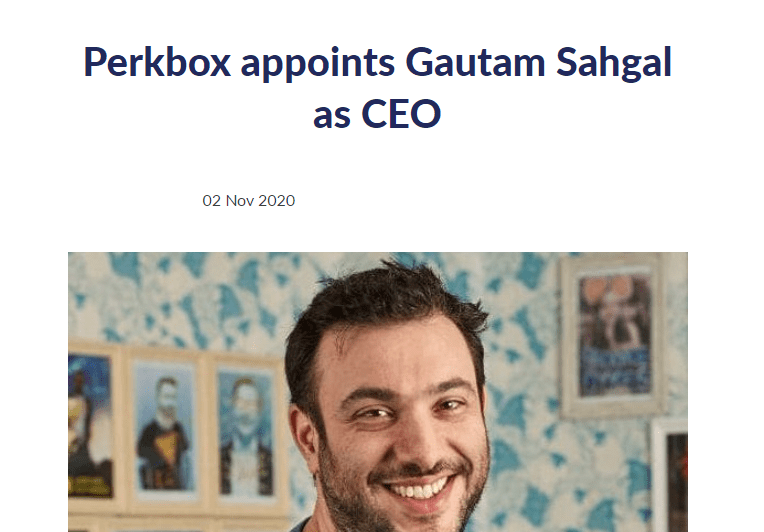
If you’re receiving industry awards, or working on new training courses & respected accreditations, then it’s worth shouting about it. As well as posting on your social channels, write a blog post.
This is going to help build social proof and/or trust with customers (& prospective customers) who read it.
Here’s an example from VOCAL, a Scottish care company who became Living Wage Accredited. This post announces to the world that they pay their staff comfortably above the national minimum wage, which is something worth shouting about.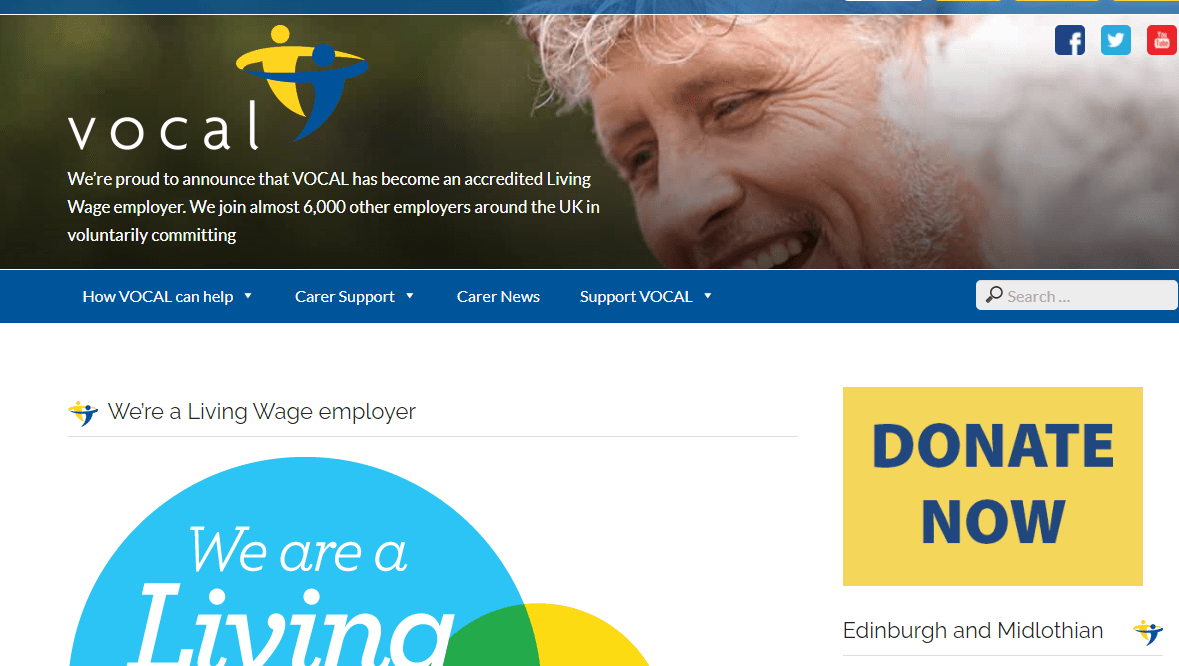
Publishing case studies lets you show off the results & outcomes that your previous customers have had. It builds social proof, and shows your potential customers what is possible with your products or services.
Take a look at Zapier’s customer stories page as an example.
It showcases a ton of different use cases for Zapier, with a diverse range of outcomes.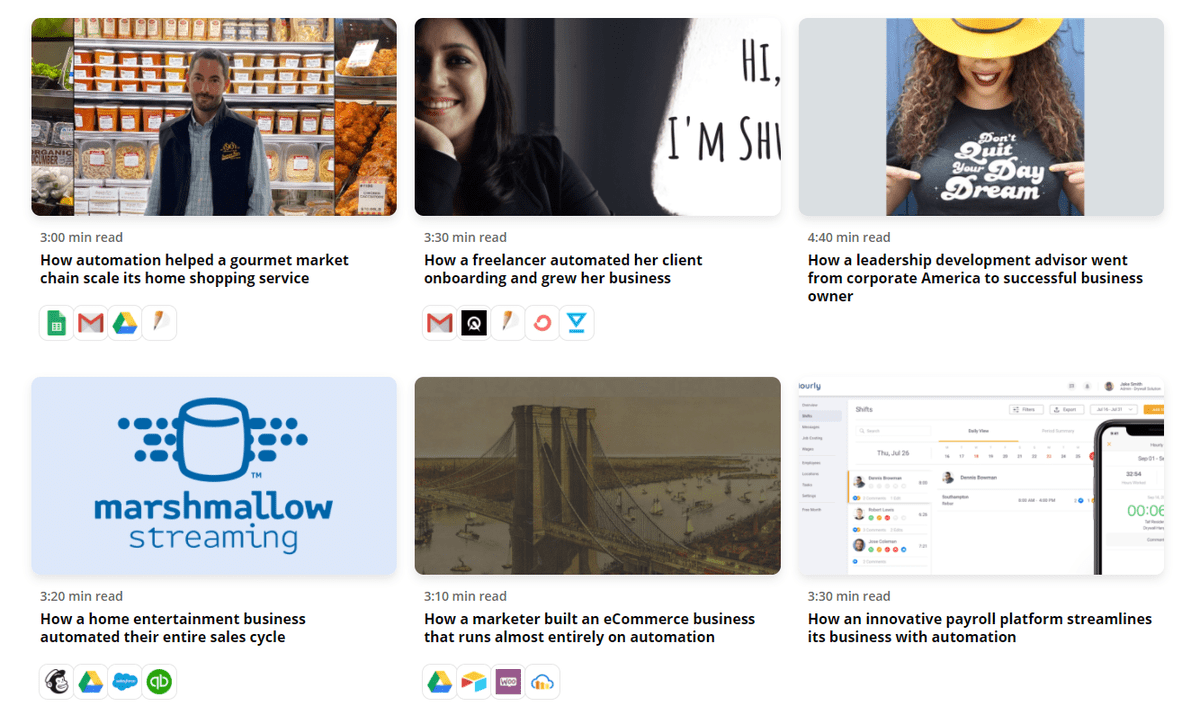
Publishing content from guest contributors is another great way to scale up your content production. But how do you get started?
To get the ball rolling, here’s 3 ideas:
To maintain some level of quality and consistency, produce some guidelines for guest authors. Keep them on track with notes on things like tone of voice, rules for external links, guidance for images, and more.
And if you’re looking for an example of a guest post, then look no further than this very article, which is a guest contribution!
Creating videos is not nearly as difficult as it once was. Smartphone quality recording is absolutely good enough for website content, and it can be a nice way to vary the content you’re sharing. Moreover, you can effortlessly repurpose it for social media using reliable social media posting tools.
Choose a topic, and write yourself a short script. Even if it’s just a loose outline to keep you on track.
With a smartphone and a cheap microphone, you’ll be good to go. If you want to bump up the production quality a little further, there are plenty of free video editing tools to make basic edits. Or, look to hire an editor hourly from somewhere like Upwork.
Flodesk University is a great example of educational video content. There’s a video above-the-fold, with additional written content underneath.
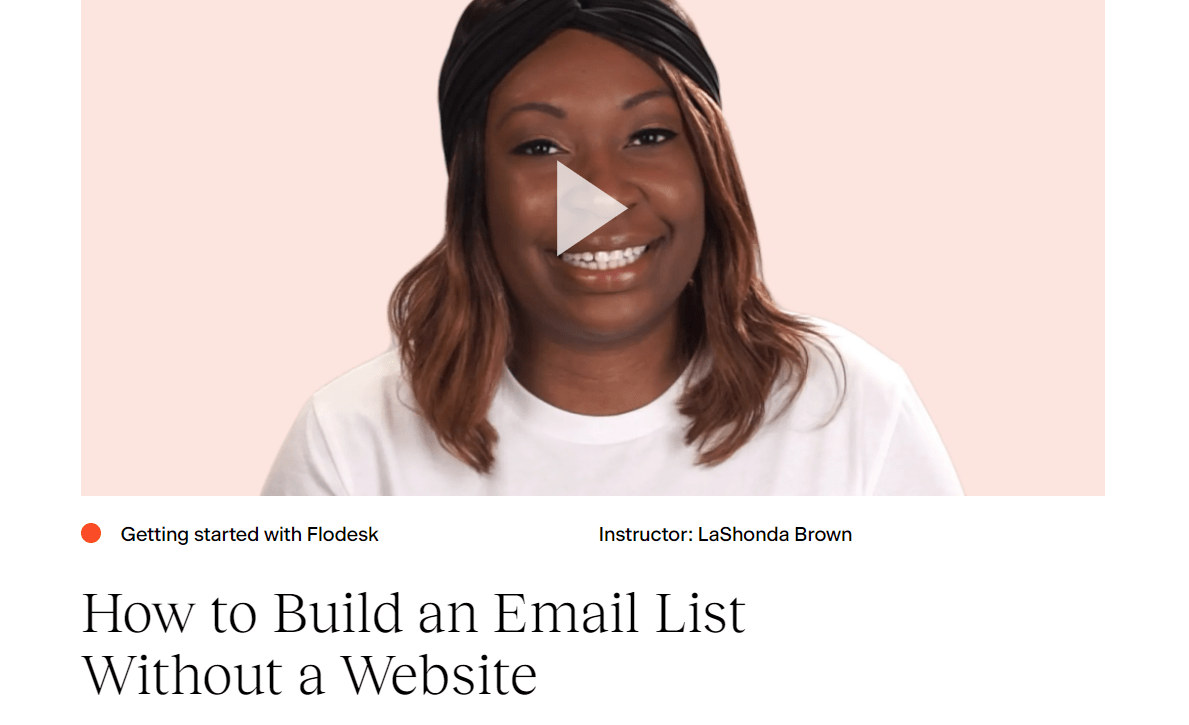
In order to add value to your audience, you don’t necessarily need to be producing original stuff every week.
Content curation has become more and more popular in blogs and newsletters.
You can round up the best resources & latest news for your industry or niche, to save your readers’ time on filtering through it all. Bonus points if you can add your own thoughts & comments on each piece as an expert, too.
Morning Brew is an excellent example of curation. They filter out the noise for you, so that you only spend your time on the most interesting & important news.
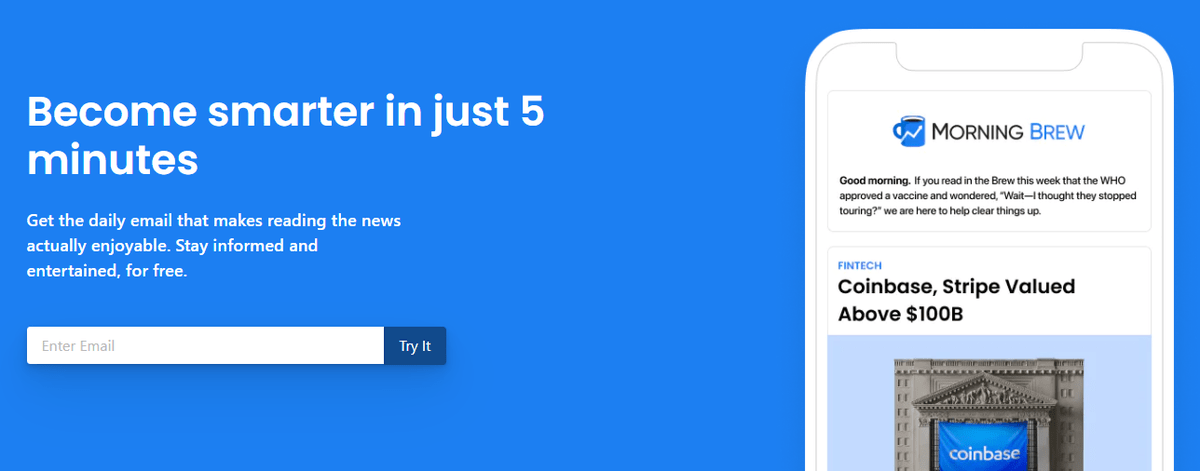
Thought leadership can be tricky to define. If you want your brand to be considered a ‘thought leader’ in your niche, then you’ll need to consistently share unique, expert insights that can’t be found elsewhere.
Consider which areas you might have unique experiences & opinions to share. Think about:
Here’s an example from Kevin Indig, director of SEO at Shopify. After the December 2020 Google algorithm update, he published his thoughts & analysis of the update. It allows him to share expertise and observations as to how the industry is being affected.
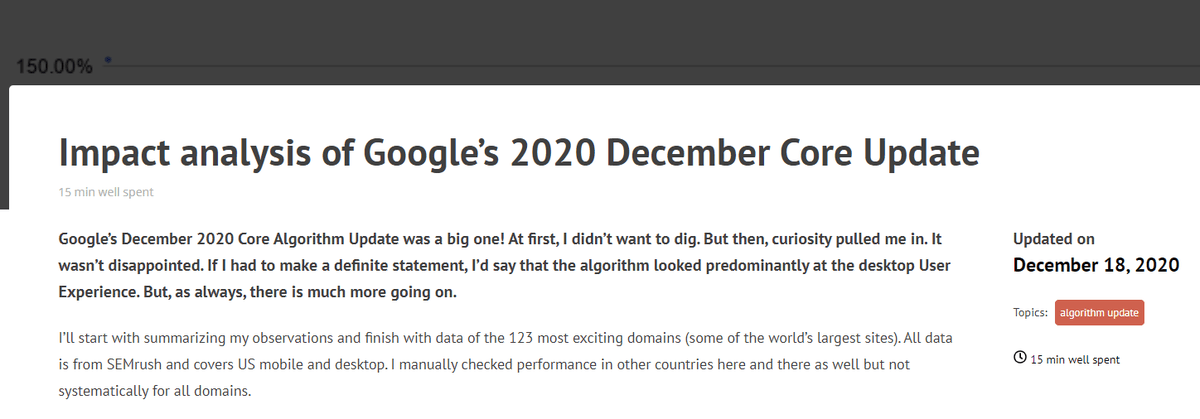
Data-driven research is often a great idea for content creation.
This type of content can attract a ton of backlinks. If you choose to, you can also ‘gate’ the content (require an email address to download it).
Try to think about:
Your research could be quantitative (e.g. running surveys), or qualitative (e.g. conducting interviews). For instance, if your small business is in the e-commerce sector, conducting research on efficient shipping methods and their impact on customer satisfaction could be a valuable topic to explore.
Here’s an example from Attest, who published content on 2021 consumer trends. As well as ranking in search engines for ‘consumer trends uk’ and other keywords, this report is gated, so it generates leads for their survey platform.
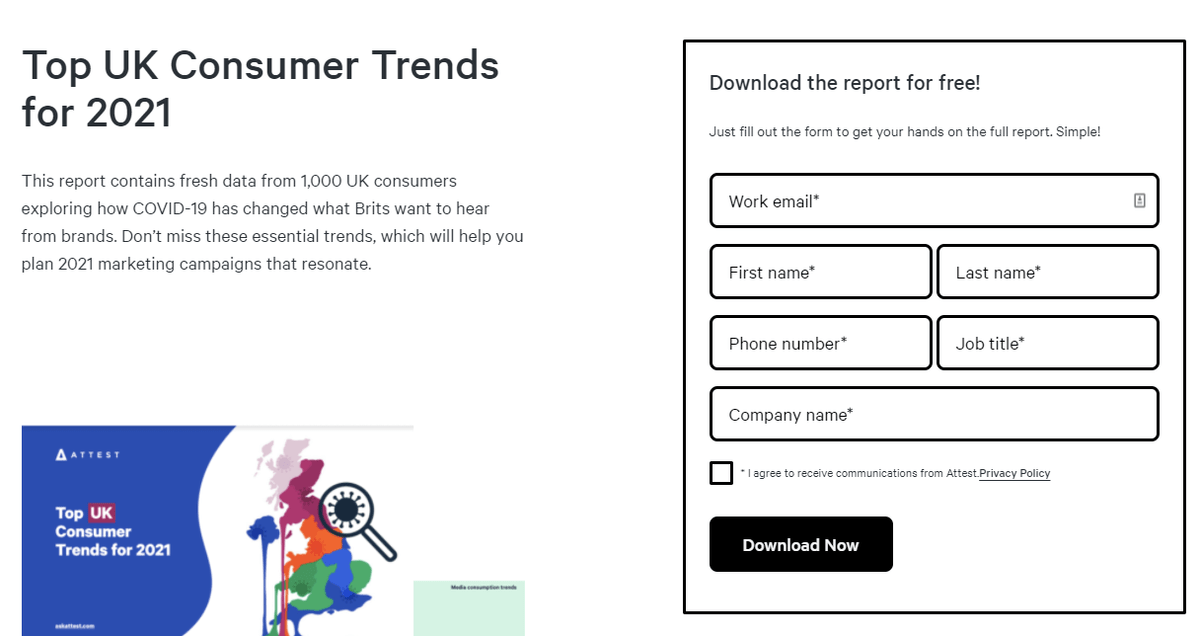
If all the ideas above still aren’t enough, here’s some extra tips to make sure you’ll never run out of content ideas again.
If you have an existing audience on social media, an email list, or existing customers, this one’s easy. Not sure what kind of content to produce for them? Ask!
That could be in the form of a simple social post, an online survey, or even a handful of more in-depth interviews. You can ask about their challenges and interests, and find something that aligns with your expertise.
Take a look back through your existing social posts, blog articles, and emails sent. Which have been the most popular? Which have you enjoyed creating? Which are out of date?
Perhaps you can elaborate further on a topic, or perhaps something is now so old it’s no longer relevant or accurate. With the assistance of educational software development services, you can revamp outdated content and provide your audience with fresh, up-to-date information.
Doing this once or twice a year is sure to inspire some new ideas.
Pick out 5-10 of your closest competitors, and see what’s working for them. Here’s a few ways you can do that:
Naturally, you won’t be able to copy exactly what they’re doing. But once again, it’s another source of inspiration for new ideas. See what’s working for them, put your own spin on it, and execute better than them.
There’s a plethora of great content ideas out there that you can use when writer’s block strikes. It’s down to you to decide which are the best for your audience and your wider digital marketing strategy.
Whichever content types you choose – take care of the quality, publish new posts consistently, and you’ll be rewarded with compounding traffic growth.